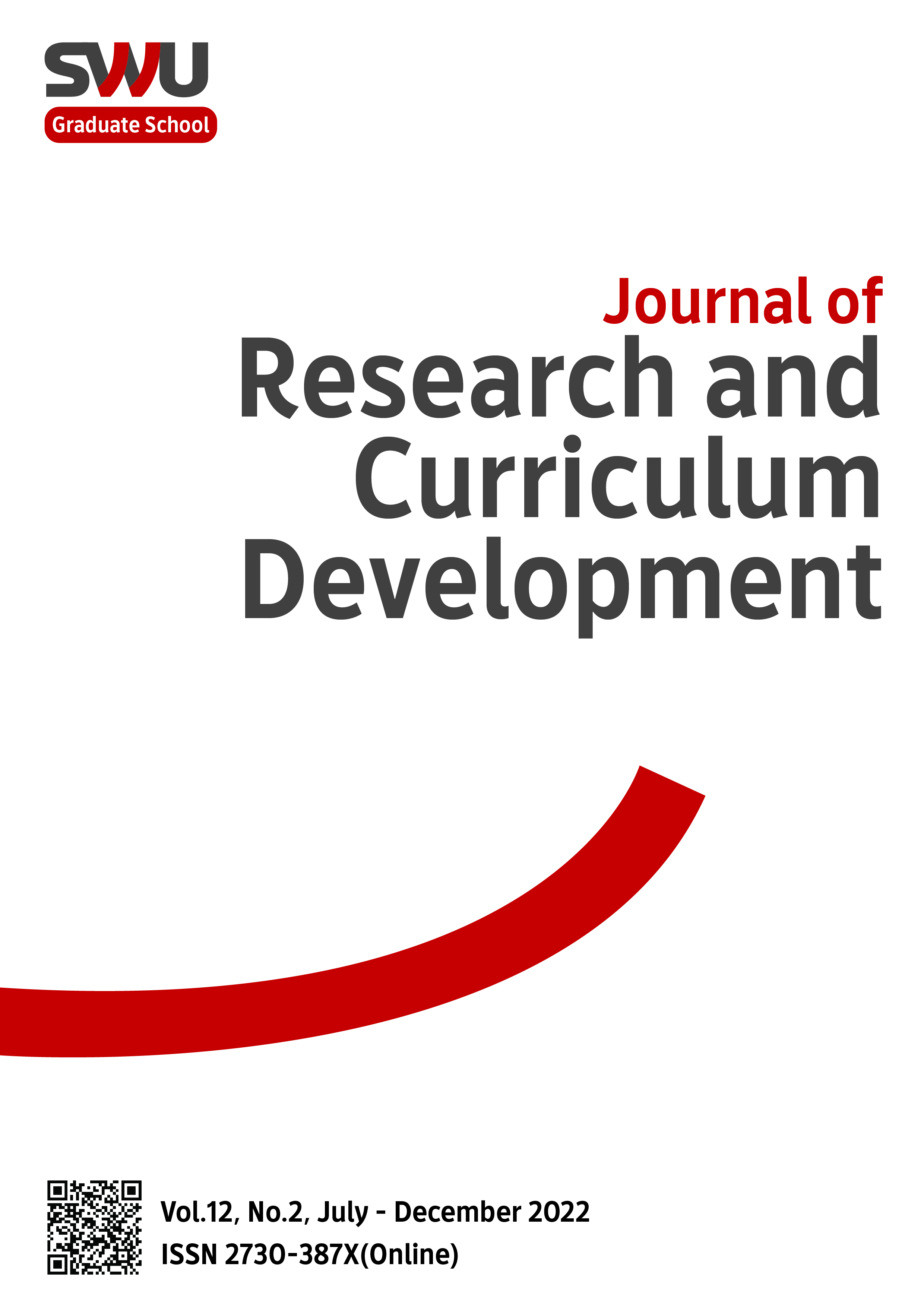The Development of STEAM Education Model to Enhance Thinking skills of Srinakharinwirot University Prasarnmit Demonstration School (Elementary) 5th Grade Students
Keywords:
Keywords : STEAM education model, Thinking skills, Elementary studentsAbstract
The purposes of this research were to develop and determine the efficiency of a STEAM education model to enhance thinking skills of grade 5 students, and to compare thinking skills before and after learning with STEAM education model of grade 5 students. The sample of the study were 27 students of 5th grade at Srinakharinwirot University Prasarnmit Demonstration School (Elementary) in 2nd semester of 2019, which was obtained by cluster random sampling. The tools used were 7 STEAM education lesson plans for grade 5 students (10 periods) and 20 questions thinking skills test of grade 5 students. The research design was the one group pretest-posttest and the statistics used were efficacy determination E1/E2, mean (x̄), Standard Deviation, and t-test Dependent Sample. The research results found that, the STEAM Education model which was developed for grade 5 students’ efficacy of process value was 86.27 and efficacy of product was 81.30 which complied to the defined criteria of 80/80. After learning with STEAM education model, grade 5 students have higher thinking skills than that of before learning at the statistical significance level of .01
References
Anchalee Saiwan. (2005). The Development of Teaching Models for Thinking skills to Seek Knowledge for Early Childhood Children. Ph.D. Thesis (Early Childhood Education). Bangkok: Graduate School Srinakharinwirot University.
Burke Johnson and Larry Christensen (2004). Educational Research Quantitative, Qualitative, and Mixed Approaches. (2nd ed.) Pearson Education, Inc (p.277) Boston U.S.A
Chalatip Samahito (2014). STEAM Learning Experience Arrangement at the Early Childhood Education Level. Educational Perspective Journal, 30(2): pp. 102-111
Fatmaaswaini Taye, Nattinee Mophan, and Mahdi Vedramae (2017). The Outcome of STEAM Education-Based Learning Management on Science Learning Achievement, Creativity, and Satisfaction with Learning Management of Elementary Grade 5 Students. Narathiwat Rajanagarindra University Journal – Humanities and Social Sciences, 4(2), 1-14
George A. Ferguson and Toshio Takane. (1989). Statistical Analysis in Psychology and Education (Sixth Edition): New York, McGraw-Hill Book Company. (p.188)
Georgette Y. (2008, online). STEAM Education: an overview of creating a model of integrative Education. Retrieved May.2, 2019 from https://www.researchgate.net/publication/327351326_STEAM_Education_an_overview_of_creating_a_model_of_integrative_education
Natthaphong Thetthong (2021). The Outcome of STEAM Education Based Science Learning Management to Enhance Innovative Skills and Attitude towards Science of High School Students. Master’s Degree Thesis (Department of Curriculum and Teaching Methods). Bangkok: Graduate School Silpakorn University.
Park, HJ., Kim, Y., Noh, S., Lee, J., Jeong, J., Choi, Y., Han, H., & Baek, Y. (2012). Components of 4C-STEAM education and a checklist for the instructional design. Journal of LearnerCentered Curriculum and Instruction, 12(4)
Yilip K, Namje P. (2012). Development and Application of STEAM Teaching Model Based on the Rube Gddbery’s Invention. Computer Science and its Applications Lecture Notes in Electrical Engineering [serial online] 203( 1) : 693- 698.
Downloads
Published
How to Cite
Issue
Section
License

This work is licensed under a Creative Commons Attribution-NonCommercial-NoDerivatives 4.0 International License.


